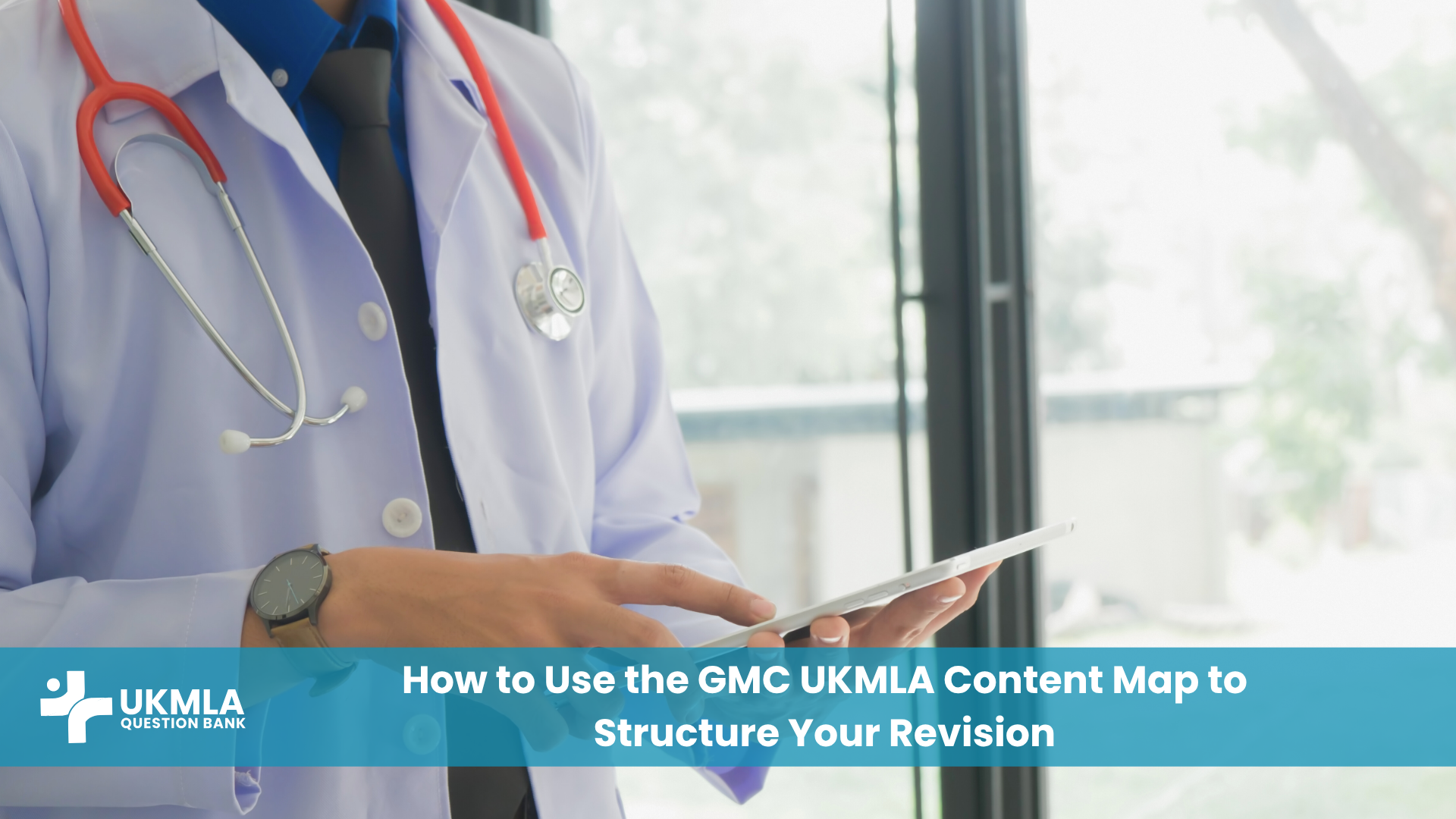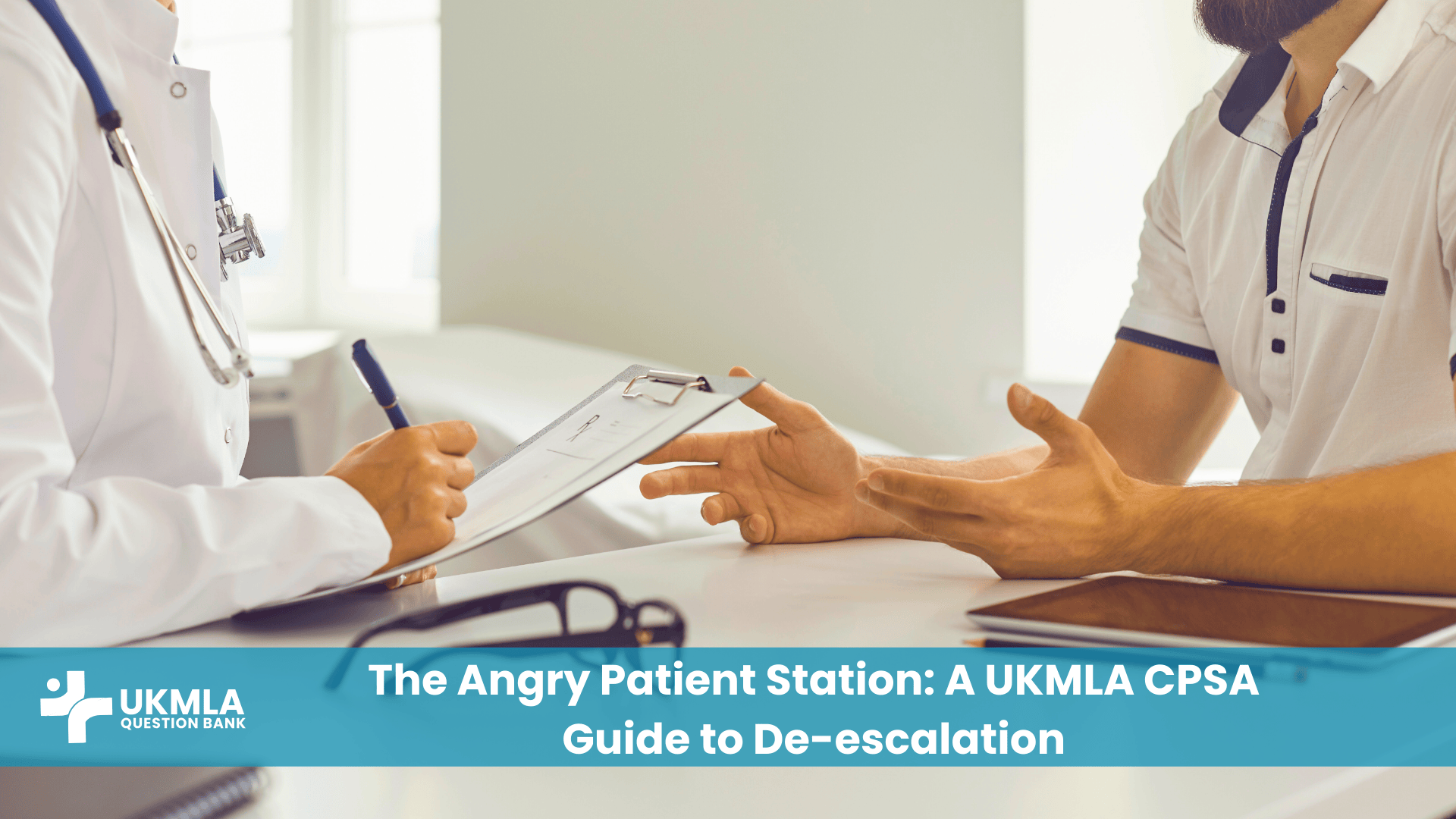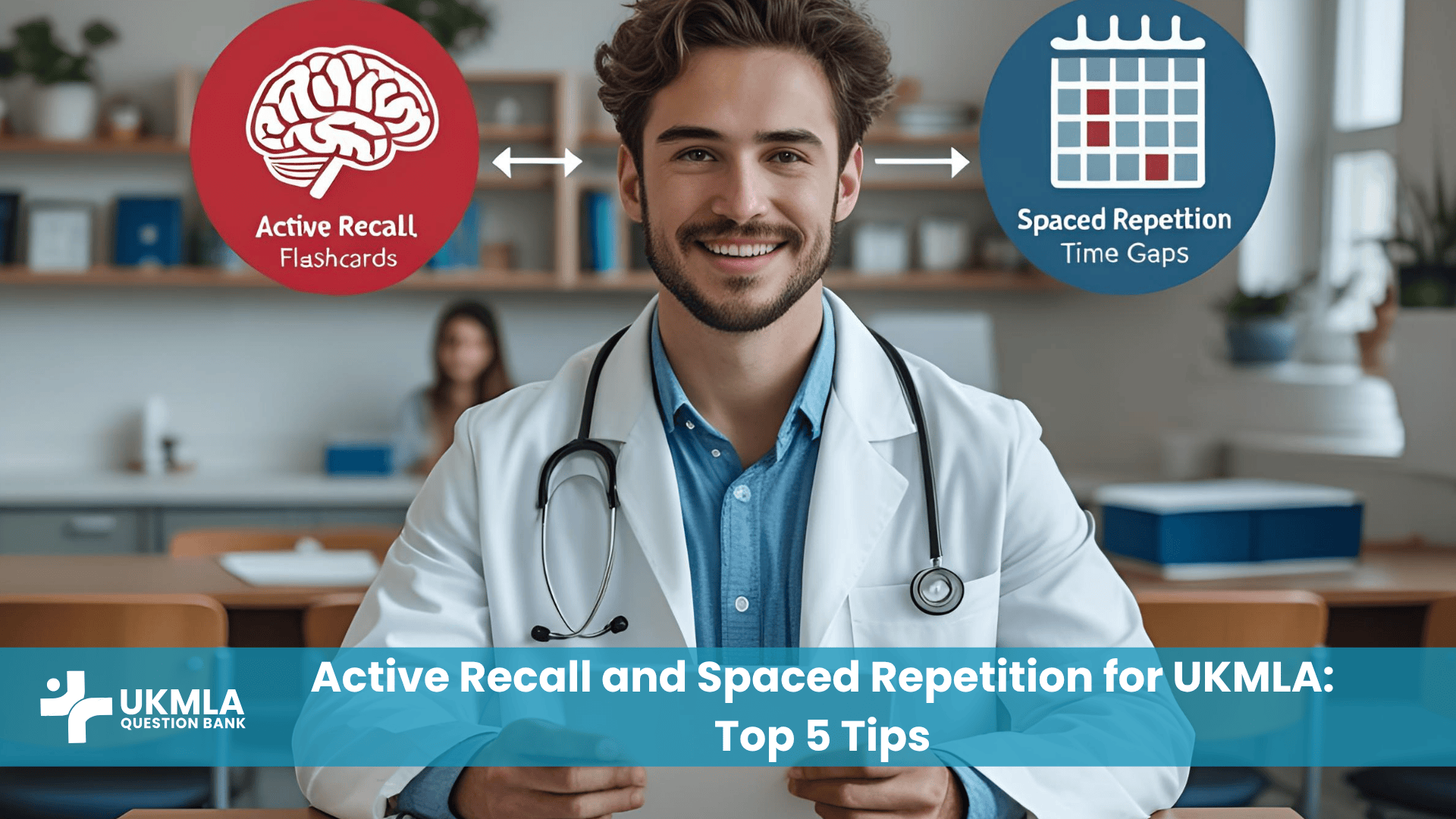An effective GMC UKMLA Content Map Revision strategy is crucial for the UK Medical Licensing Assessment (UKMLA) journey, which is a marathon requiring diligent preparation. At the heart of this preparation for an effective GMC UKMLA Content Map Revision lies a critical document provided by the General Medical Council (GMC): the MLA Content Map.. While we’ve previously established that the “[GMC UKMLA Content Map: Your Blueprint for Success]” is essential, knowing how to wield this tool effectively to structure your revision can make all the difference between feeling overwhelmed and feeling empowered. This guide will provide practical, actionable strategies on how to use the GMC UKMLA Content Map to organize your study, identify priorities, and ensure comprehensive coverage for both the Applied Knowledge Test (AKT) and the Clinical and Professional Skills Assessment (CPSA).
For any candidate, be it a UK medical student or an International Medical Graduate (IMG), transforming the Content Map from a static document into a dynamic revision framework is key. Let’s explore how to do just that.
The Role of GMC UKMLA Content Map Revision Strategy
Before diving into structuring your revision, it’s vital to reiterate the Content Map’s purpose. It outlines the core knowledge, skills, and behaviours examinable in the UKMLA, all geared towards ensuring “[UKMLA Readiness for Safe Practice]”. It’s not a textbook replacement but a detailed syllabus that tells you what areas you need to cover. Your task is to figure out how to cover them effectively.
The Content Map typically breaks down into three main domains:
Areas of Clinical Practice: The medical and surgical conditions and presentations.
Areas of Professional Knowledge: Ethics, law, patient safety, etc.
Clinical and Professional Capabilities: Practical skills, communication, teamwork.
Each of these domains, and their sub-topics, needs to be systematically addressed in your revision plan.
Step 1: Deconstruct the Content Map – Your Initial Analysis
This initial breakdown is fundamental to an effective GMC UKMLA Content Map Revision approach, before you start allocating study time.
Action 1.1: Obtain the Latest Version. Always download the most current version from the official GMC website. Guidelines and emphasis can evolve.
Action 1.2: Read Through Entirely. Get a holistic overview. Understand the main domains and the level of detail provided for various topics. Note any introductory sections or explanations provided by the GMC within the document.
Action 1.3: Break it Down into Manageable Sections. The map can seem vast. Mentally or physically divide it into smaller, logical chunks. This could be by clinical specialty (e.g., Cardiology, Respiratory from “Areas of Clinical Practice”), by professional theme (e.g., Consent, Confidentiality from “Areas of Professional Knowledge”), or by skill type (e.g., History Taking, Examination from “Clinical and Professional Capabilities”).
Step 2: Self-Assessment Against the Content Map – Identify Your Gaps
Once you have a grasp of its structure, the next crucial step in your GMC UKMLA Content Map Revision is to honestly assess your current knowledge and skills against each item.
Action 2.1: Create a Tracking System. This could be a spreadsheet, a dedicated notebook, or annotations directly on a printed copy of the map.
Action 2.2: Use a “Traffic Light” System (or Similar). For each topic, condition, presentation, or skill listed, a self-rating is useful in your ongoing GMC UKMLA Content Map Revision.
Green: You feel confident and have a strong understanding/competence.
Amber: You have some knowledge/skill but need further review or practice.
Red: This is a weak area, or you have very little knowledge/skill.
Action 2.3: Be Specific and Honest. Don’t just mark “Cardiology” as green. Break it down. You might be green for “Stable Angina” but red for “Interpreting Complex Arrhythmias.” This granularity is vital for targeted revision. This process helps you understand which areas require more attention in your “[Creating the Perfect UKMLA Study Plan: A 3-Month Template]”.
Step 3: Prioritizing Topics for Revision
Not all topics are created equal in terms of their breadth, complexity, or potential frequency in the exam. While you must aim for comprehensive coverage in your GMC UKMLA Content Map Revision, prioritization is key, especially if time is limited.
- Action 3.1: Focus on “Red” and “Amber” Areas First. Addressing these identified weaknesses during your GMC UKMLA Content Map Revision offers the greatest potential for score improvement.
Action 3.2: Consider “High-Yield” Topics. While the GMC doesn’t explicitly label topics as “high-yield,” common conditions, important emergencies, and core professional principles are likely to feature prominently. Experience from senior colleagues, tutors, and reputable question banks (like those at ukmlaquestionbank.com) can help identify these.
Action 3.3: Integrate Across Domains. Many clinical scenarios will draw on knowledge and skills from all three domains of the Content Map. For example, managing a patient with chest pain (Domain 1) will require communication skills (Domain 3) and an understanding of consent (Domain 2). Try to link topics during revision.
Step 4: Effective GMC UKMLA Content Map Revision: Structuring Study Sessions
Now, translate your analysis and priorities into a structured revision schedule.
Action 4.1: Allocate Time Blocks. Based on your self-assessment, allocate more time to your red and amber topics. For example, if “Endocrinology” is a red area, schedule more sessions for it than for a green area.
Action 4.2: Theme Your Study Days/Weeks. You might decide to focus on specific systems (e.g., a week on Respiratory, covering all relevant Content Map items) or mix topics to keep things varied.
Action 4.3: For each item from the map, your GMC UKMLA Content Map Revision should include planned, specific learning activities:
Knowledge Acquisition (AKT focus):
Read relevant textbook chapters.
Review clinical guidelines (e.g., NICE).
Watch educational videos.
Make concise notes summarizing key points.
Knowledge Application (AKT & CPSA focus):
Answer practice questions from a quality UKMLA question bank.
Work through clinical case studies.
Skills Practice (CPSA focus):
For clinical skills: Practice examinations on peers or manikins.
For communication skills: Role-play scenarios based on Content Map presentations.
For procedural skills: Attend skills lab sessions or practice on simulators.
Action 4.4: Link Back to the Map. After each study session, revisit the relevant section of the GMC UKMLA Content Map Revision. Did you cover the intended learning outcomes? Can you now confidently re-assess your traffic light for that topic?
Step 5: Integrating Question Banks and Mock Exams with the Content Map
Practice questions and mock exams are essential for your GMC UKMLA Content Map Revision, and the Content Map itself should guide how you use them.
Action 5.1: Targeted Question Practice. If your self-assessment identified “Paediatric Emergencies” as a weak area, specifically seek out and practice questions related to these topics from your question bank. Many question banks allow filtering by specialty or system.
Action 5.2: Analyze Mock Exam Performance Against the Map. After taking a mock AKT or CPSA (refer to “[UKMLA Mock Exams: Your Ultimate Key to Unlocking Top Scores…]” for strategy), don’t just look at your overall score. Break down your performance by the areas outlined in the GMC UKMLA Content Map Revision.
Which domains or specific topics did you struggle with?
Update your traffic light self-assessment on the Content Map based on this feedback.
Use this analysis to direct your subsequent revision.
Step 6: Using the Content Map for CPSA Scenario Preparation
The Content Map is invaluable for preparing for the diverse stations in the CPSA.
Action 6.1: Identify Potential CPSA Scenarios. Many “Areas of Clinical Practice” (e.g., “adult with shortness of breath”) and “Clinical and Professional Capabilities” (e.g., “breaking bad news”) directly translate into likely CPSA station themes.
Action 6.2: Develop Frameworks for Common Stations. For each potential scenario type derived from the map (e.g., history taking for chest pain, explaining a new diagnosis of diabetes, consenting for a procedure):
Outline a structured approach.
List key questions to ask or points to cover.
Consider potential challenges or ethical issues.
Action 6.3: Practice, Practice, Practice. Role-play these scenarios with peers, focusing on communication, clinical reasoning, and professionalism, always keeping the relevant Content Map domains in mind.
Step 7: Regular Review and Adaptation
Your understanding progress with your GMC UKMLA Content Map Revision. The Content Map should be a living document in your preparation.
Action 7.1: Periodically Re-Assess Yourself. Every few weeks, go back through the GMC UKMLA Content Map Revision and update your traffic light ratings. Hopefully, you’ll see reds and ambers turning green!
Action 7.2: Adapt Your Revision Plan. If certain areas remain persistently challenging, you may need to change your study approach for those topics – perhaps seek out different resources, join a study group, or get help from a tutor.
Action 7.3: Pre-Exam Final Sweep. In the final weeks before your exam, use the Content Map for a final sweep to ensure you’ve covered all major areas and to do a quick refresh of topics you haven’t reviewed recently.
Understanding “[The Role of the UKMLA in Your Journey to Becoming a UK Doctor]” emphasizes why such structured preparation, guided by the official map, is so important.
Frequently Asked Questions (FAQ) on Using the GMC UKMLA Content Map Revision
The level of detail should be appropriate for a doctor at the point of UK registration (F1 level). Focus on understanding core concepts, common presentations, key investigations, principles of management, and red flags, rather than highly specialized or esoteric knowledge.
The Content Map focuses on common and important conditions/presentations. If a very rare condition isn’t listed, it’s less likely to be a primary focus. However, understanding fundamental principles applicable to broader categories in the map is still important.
Many find a system-based approach (e.g., cardiology, respiratory) effective for Domain 1 (“Areas of Clinical Practice”), as this aligns with how medical knowledge is often taught and organized in textbooks. Domains 2 and 3 (Professional Knowledge and Capabilities) can then be integrated or studied as distinct themes. Find what works for you.
Regularly. Use it for initial planning, weekly reviews of progress, after mock exams to identify weaknesses, and for a final sweep before the exam.
The GMC provides the Content Map itself and often includes an introduction explaining its purpose. Specific revision strategies are usually developed by candidates or educational providers based on the map’s structure.
Yes. You can compare the topics covered by a question bank against the Content Map to see how well it aligns. A good question bank should offer comprehensive coverage of the map’s domains.
Either ignoring it completely or only giving it a superficial glance. Active, ongoing engagement and using it to structure revision are key. Another mistake is using an outdated version.
Not entirely. It’s good to periodically refresh even your strong areas using techniques like spaced repetition to ensure knowledge retention, but you can allocate less time to them compared to your amber/red areas.
By helping you identify your weak areas (“red” topics), you can allocate a proportionate amount of your study time to those areas that need the most work, ensuring efficient use of your revision period.
No, the Content Map outlines the scope of what can be assessed but does not detail the exact number of questions or stations per topic in any given exam. The exam aims for a balanced representation of core areas.
Conclusion: The Content Map as Your Personalized Revision Director
The GMC UKMLA Content Map Revision process, when approached strategically, transforms the map from a list of topics into a powerful organizational tool directing your entire study. By deconstructing it, performing honest self-assessments, prioritizing effectively, and integrating it with your study resources and practice, you transform it into a personalized roadmap to UKMLA success.
Don’t let the breadth of the GMC UKMLA Content Map Revision intimidate you. Instead, view it as the GMC’s clear guidance on what you need to master. Use it wisely to structure your revision, build your confidence, and ultimately demonstrate your readiness for safe and effective medical practice in the UK.



